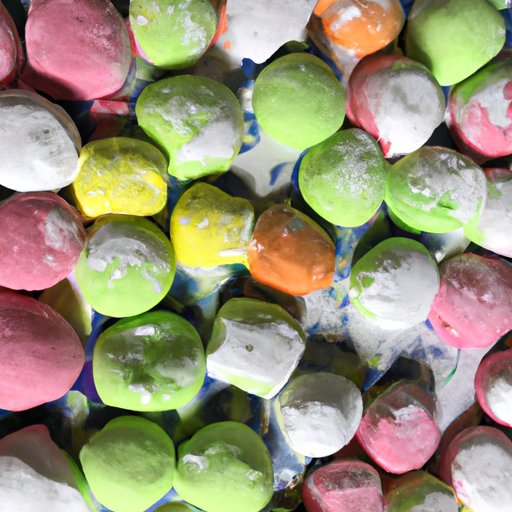
I. Introduction
Have you ever bought store-bought play dough only to find it too hard, too soft, or too crumbly? Making your playdough may seem daunting, but with this comprehensive guide, you can create endless possibilities of homemade play dough. In this article, we will explore a step-by-step guide to making playdough from scratch, different recipe options, coloring techniques to personalize playdough, inspiration for creating molds, the benefits of playing with playdough, and troubleshooting tips. Let’s get started on this fun and engaging journey!
II. A Step-by-Step Guide to Make Play Dough from Scratch
To make play dough, you will need:
- Flour – 2 cups
- Salt – 1/2 cup
- Cream of tartar – 2 tablespoons
- Vegetable oil – 2 tablespoons
- Food coloring – liquid or gel (optional)
- Water – 2 cups
Equipment:
- Bowl
- Mixing spoon
- Pot
To make your play dough, follow these steps:
- Add flour, salt, and cream of tartar to the bowl and mix them.
- Put the pot on medium heat and add the vegetable oil into it.
- When the oil gets warm, pour the dry ingredients from the bowl into the pot and stir continuously.
- In a separate container, mix the water and food coloring until the desired color is achieved.
- Pour this mixture into the pot containing flour mixture. Continue stirring until the dough forms into a ball and becomes less sticky.
- Your homemade play dough is ready to use!
III. A List of Different Types of Play Dough Recipes
Aside from the traditional recipe just covered, there are many other play dough recipes to choose from to cater to your interests or needs. Here are some options:
- Edible play dough – made with food ingredients to make it safe for toddlers or children who love to taste everything in sight
- Scented play dough – made with different scents such as vanilla, fruits, or flowers to stimulate children’s sense of smell and add to the fun
- Slime play dough – made with glue and a mixture of other ingredients to produce a more slimy and squishy texture
IV. Highlight Different Food Coloring Techniques to Personalize Play Dough
Food coloring is an excellent way to make your play dough more exciting, and there are various coloring techniques you can experiment with, such as:
- Marbling – adding multiple colors to the dough before kneading to create a beautiful marble-like effect
- Ombre – mixing white play dough and colored play dough to create a gradual color change effect
- Adding glitter – adding glitter to the mix to create a magical and sparkling effect that kids will love
V. Use Classic Literature Characters as Inspiration for Play Dough Creations
You can use classic children’s literature characters such as The Very Hungry Caterpillar, Winnie the Pooh, or Harry Potter as inspiration for creating play dough molds that children can use to tell stories or role-play. Here are some examples:
- Winnie the Pooh – create molds of Winnie and his friends and build their homes and surroundings
- Harry Potter – create molds of the characters and the magical items, such as wands, potions, and broomsticks in the story
- The Very Hungry Caterpillar – create molds of the caterpillar at different stages of development and its food such as fruits, chocolate cake, and lollipops to teach children about healthy eating

VI. A Video Tutorial on How to Make Play Dough
If you prefer visual learning, we have included a video tutorial that covers the step-by-step guide explained in Section II:
VII. Investigate the Benefits of Playing with Play Dough
Playing with play dough is more than just an enjoyable activity; it also has several benefits for children’s development, including:
- Motor skill development – squeezing, rolling, and kneading play dough help with fine motor skills and hand-eye coordination
- Stress relief – playing with play dough can help children release stress and express their feelings
- Creativity building – play dough encourages children to use their imagination and express their creativity
VIII. Provide Troubleshooting Tips for Homemade Play Dough Consistency Issues
Even with the recipe and instructions provided, you may encounter issues with your homemade play dough. Below are some hacks to troubleshoot the common issues:
- If your play dough is too dry, try adding a tablespoon of water at a time until you reach the desired consistency
- If your play dough is too sticky, add a tablespoon of flour at a time until you reach the desired consistency
- If your play dough is too crumbly, try adding a tablespoon of oil at a time until you reach the desired consistency
- If your play dough is too hard, try heating it up on the stove again with a tablespoon of water until it becomes more pliable and easier to knead
IX. Conclusion
Now that you have all the necessary tools and insights, it is time to get creative and enjoy homemade play dough with your children. Making play dough is a fun, engaging, and educational activity that helps your child develop essential skills while also having fun.




